Spring in the Pine Barrens
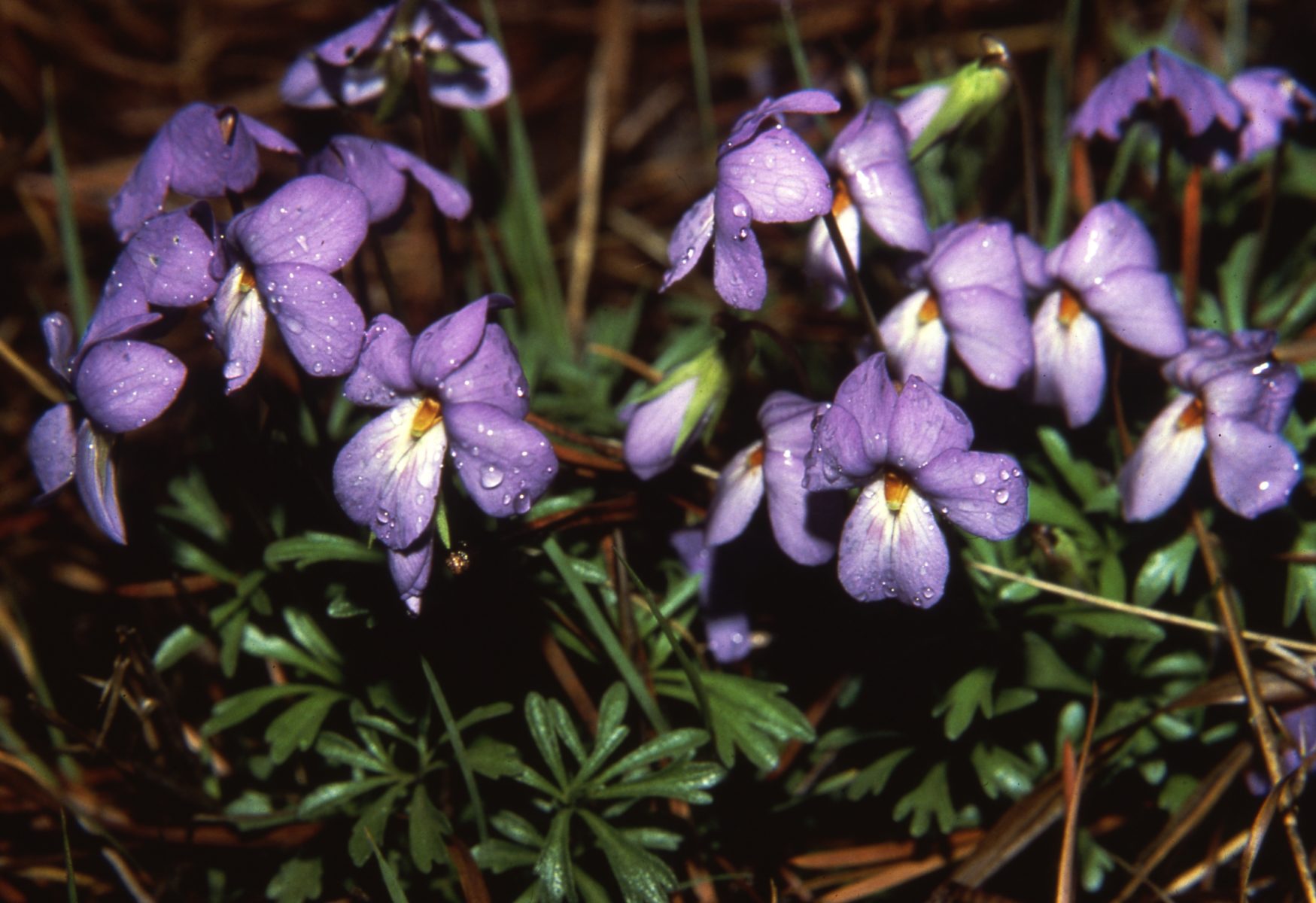
By Bob McGrath, Pine Barrens Society Co-Founder
The natural world that surrounds us offers thousands of simple pleasures – the splendor of fall foliage, the subtle fragrance of Trailing Arbutus, the tranquil song of the Wood Thrush, the uncanny rhythm of nature’s breadth and grandeur – if only we take the time to stop, listen, and reflect. For me, enjoying nature’s pleasures is a natural and harmonious choice and there is no better time to slow down and take in all that the natural world has to offer than the onset of spring in our Pine Barrens.
Spring for me doesn’t simply arrive (as it officially will this year when the clock strikes 1:48 AM on March 20th), with one single event, but rather with a series of events like the first soaking rains of the New Year. This year that occurred in January and with them came the first sign that spring was in the air, the emergence of Tiger Salamanders. Those who have ever trekked-out into the night in search of these mysterious denizens know full well the feeling of renewed spirits that comes over you when you watch as the spatula-tailed males court females by conducting what could best be described as a water ballet. Tigers are not the only mole salamander to go through such elaborate courtship rituals; in fact, two other of Long Island’s four mole salamander species (the Spotted and Blue-spotted) have similar breeding habits. Yet it is the Tiger that makes its emergence first, often before the ice has melted from their breeding ponds and often before any of us is really thinking about the onset of spring.
On many of these journey’s I have often encountered another sure sign that spring is on its way, the territorial calling of our largest resident owl, the Great Horned. Like Tiger Salamanders, Great Horned Owls begin breeding early in the season, often setting up territories in early January and incubating eggs by mid-February throughout not only our Pine Barrens but in mixed deciduous forests as well. Just last week I happened upon a female as she sat hunkered down in an old gray squirrels nest almost certainly incubating this year’s clutch of eggs. She is actually somewhat late I thought to myself as she leered intently at me.
As we move through March, another delightful sign that spring is indeed in the air in our Pine Barrens is the arrival of Pine Warblers. One of a good number of Warbler species that calls the Pine Barrens home, the Pine is first to arrive from it’s wintering grounds in the southern United States. For me their subtle trill can warm even the chilliest March morning as they search the tops of Pitch Pines looking for winter moths to feed upon.
A walk through the Pine Barrens in spring also brings with it numerous wildflowers that if you do not get out early to see will be gone until next year. Although not considered true ephemerals (species that capitalize on early spring sunlight by blooming in profusion, setting seed and dieing back, often by mid June) species such as Bearberry, Trailing Arbutus, and Birds-foot Violet are just a few of the wildflowers that one can encounter. The first of these to bloom is Bearberry, the ubiquitous groundcover found throughout the Pine Barrens. Bearberry is actually an evergreen shrub that many people do not even realize has a flower as they begin to make their appearance in late March and early April long before most other species begin to stir. A member of the blueberry family, bearberry has a small white, bell-like flower that often is laced with delicate hues of pink. As it is one of the first flowers to appear in spring, it is often host to many of the Pine Barrens early spring species of butterflies such as the Brown Elfin and Spring Azure Blue. If you are looking to enjoy the beauty of Bearberry the coming weeks is the time to do so.
Yes, spring in the Pine Barrens truly is a time for rekindled spirits. To me, it the chorus of Spring Peepers, the first calls of Whip-poor-wills in mid-April, Eastern Bluebirds returning to nesting boxes in Calverton, and the “peenting” of American Woodcocks in the secondary fields of Connetquot River State Park. It is a cold spring shower, a gathering of Tree Swallows on a coastal plain pond, the tranquil sunset over the Manorville Hills. Spring in the Pine Barrens is like old friend. It is the renewal that I look forward too each year once we move from November into December. The Oak Brush Plains I hiked through with two good friends as a teenager, The Dwarf Pine Plains I fell in love with as a teacher during the eighties, and the vernal ponds I have spent countless hours at in during middle of night looking for signs that Tiger Salamanders have emerged once again.
It’s been arriving now for weeks if we only take the time to stop, listen, and reflect.
Posted on May 21, 2019 by Long Island Pine Barrens Society
Five Great Earth Day Moments in the Pine Barrens
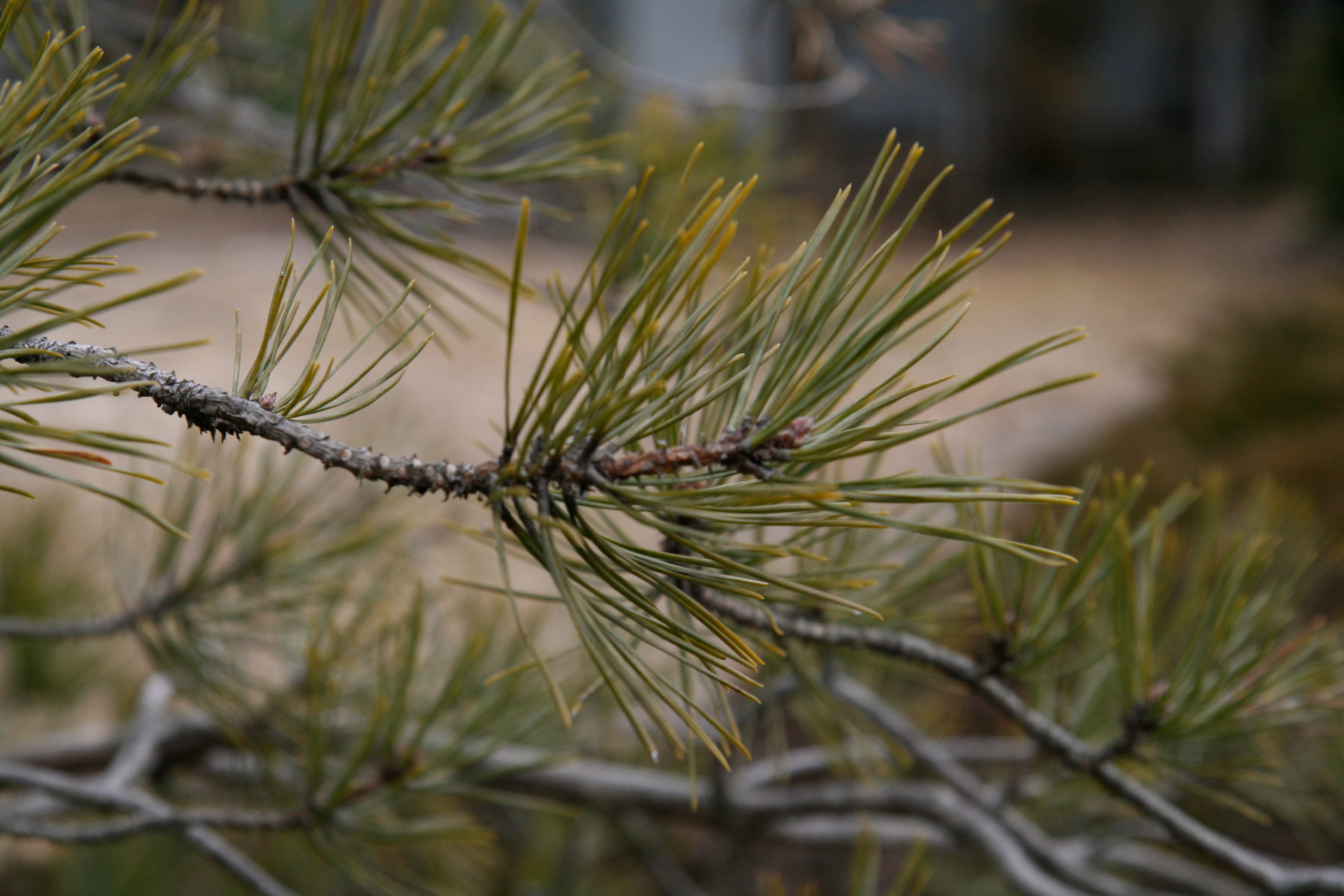
By: Ryan Wolf
Earth Day is a time to reflect on the overarching significance of the natural world on our daily lives. Forty-nine years after the first Earth Day, people must still remind themselves that each and every day is Earth Day and a healthy and sustainable environment is a right for everyone. For the Long Island Pine Barrens, Earth Day has produced some memorable events in the past few years. While it is impossible to recap all of them, here are the top five best Earth Day moments in the Long Island Pine Barrens in recent memory:
Planting & Hike In the Pine Barrens, 1996 –
Only eight months following the 1995 Sunrise Fires that scorched thousands of acres of Pine Barrens, Earth Day 1996 was a memorable time for Long Islanders to reclaim their Long Island Pine Barrens. On the day, Long Islanders, including a local Girl Scout troop, helped to plant 10,000 trees to replace those destroyed in the 1995 blaze. Other Long Islanders chose to take a hike, with dozens of outdoor enthusiasts appreciating the Pine Barrens on a two day, twenty mile hike. Only three years after the Pine Barrens Protection Act and less than a year after the worst natural disaster to afflict the ecosystem, Earth Day 1996 serves as a testament to the Long Island Pine Barrens’ eternal status as Long Island’s very own “Central Park”. For this reason, Earth Day 1996 perhaps is the most memorable Earth Day for the Long Island Pine Barrens.
2. Westhampton Land Acquisition, 2005 – The Westhampton Dwarf Pine Plains section of the Long Island Pine Barrens may be the region’s rarest feature. With only two other similar examples in the entire world, the Dwarf Pine Plains has been a key part of the Pine Barrens preserve. On Earth Day 2005, an agreement to preserve 309 more acres of these Dwarf Pine Plains was announced by then-Governor George Pataki at Quogue Wildlife Refuge. The acquisition represented nearly half of the current 788 acre property in Westhampton. These types of essential acquisitions have contributed to the realization of the dream that brought about the original creation of the 1993 Pine Barrens Protection Act.

3. Save the Earth Contest, 2005 – The Long Island Pine Barrens is not owned by anyone generation. It will inherited by future generations and, while those of us today must protect it, future generations must develop a conservation ethic. This was the logic behind the Society’s 2005 “Save the Earth” essay writing and poster contest. Partnering with the KeySpan Foundation for the 35th anniversary of Earth Day, the Pine Barrens Society invited students to develop their environmental appreciation, with fourth and fifth graders invited to create posters and seventh and eighth graders asked to write essays based on the prompt “Name one of today’s greatest environmental challenges and what can be done about it?” The contest produced dozens of great projects and ideas from young environmental leaders, which were showcased during an Earth Day ceremony with legislators and environmental leaders. While the students who participated in the event are now in their middle and late twenties, it is clear that this contest helped to produce a conservation ethic in each participating student and created lifelong memories.
4. Carmans River Land Acquisition, 2011 – In 2011, amidst the Pine Barrens Society’s fight to save the Carmans River and the Pine Barrens land adjacent to it, the New York Department of Environmental Conservation announced the acquisition of 99 acres of Pine Barrens along the headwaters of the Carmans River. Formerly known as the Gene’s Four Seasons parcel, the property had represented on the largest remaining privately held parcels within the Pine Barrens’ Core Preservation Area – where no development is allowed. The acquisition marked a significant step in the protection of the entire boundaries of the Long Island Pine Barrens set forth within the Pine Barrens Protection Act. The land is now open to the public for passive recreation, including hiking
5. Long Island Clean Water Seminar, 2018 – Long Island’s water quality crisis has been described as the region’s greatest challenge. In 2017, the Pine Barrens Society called for a “Clean Water Moonshot” in which a collective effort would be undertaken to reverse the trend of declining water quality. In 2018, with the 25th anniversary of the Pine Barrens Protection Act, which protected the ecosystem overlying the purest drinking water on Long Island, the Society was proud to participate in a “Clean Water seminar”. Hosted by the Unitarian Universalist Fellowship of Huntington, the seminar featured the Pine Barrens Society, The Nature Conservancy and Stony Brook University, all prominent members and founders of the Long Island Clean Water Partnership, as well as New York Assemblyman Steven Englebright. The event served as a great reminder of the collaboration between all levels of government, and all different organizations needed to overcome Long Island’s water crisis.

Today, on Earth Day, Long Islanders should reaffirm their commitment to conserving the environment. Through this effort, the Long Island Pine Barrens will continue to have countless Earth Day memories for years into the future.
Posted on April 22, 2019 by Long Island Pine Barrens Society
How “Crantastic”: The Pine Barrens and The Cranberry
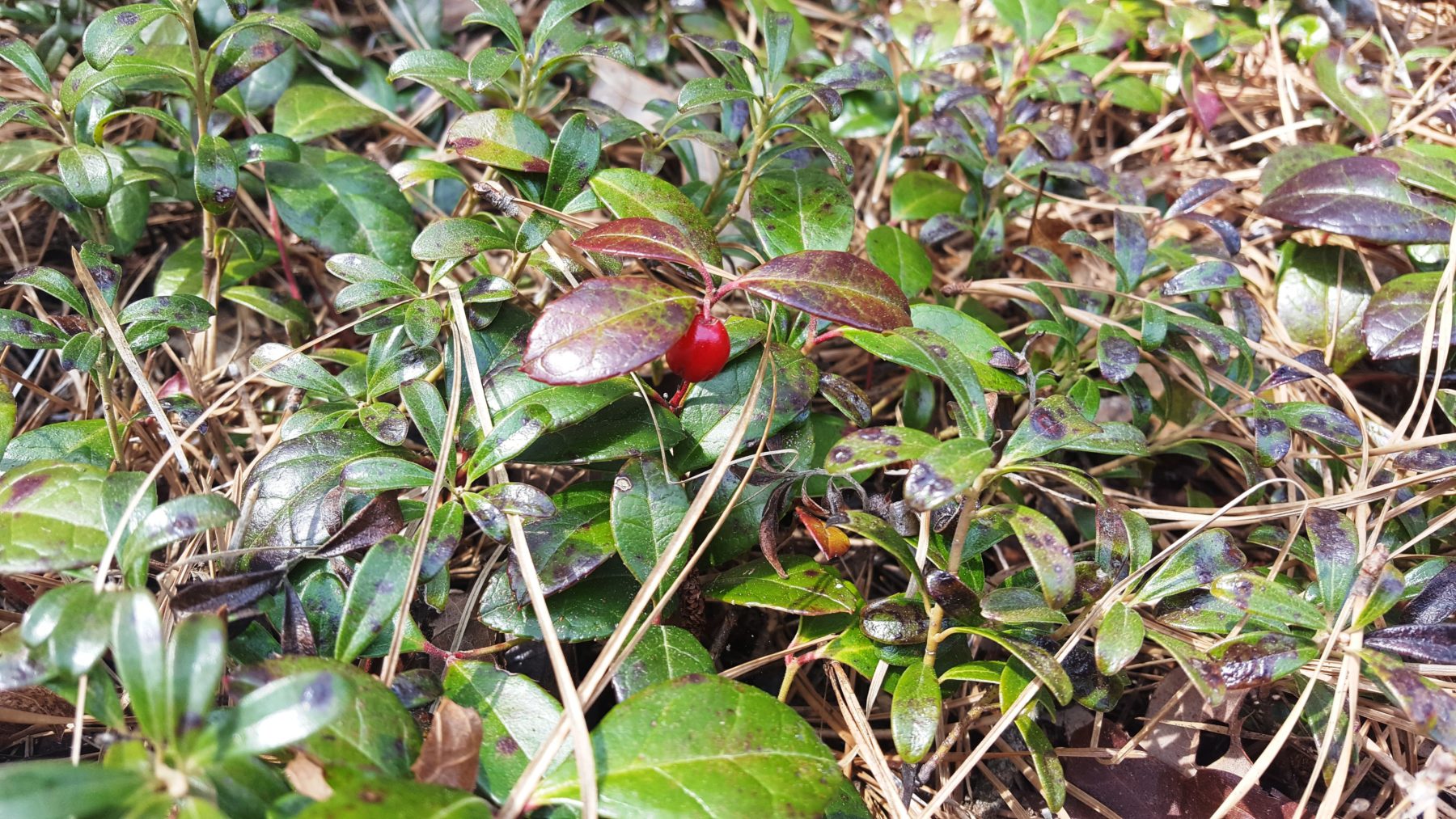
By: Ryan Wolf
This month, the Pine Barrens Society is hosting its first hike of the year at Cranberry Bog Nature Preserve in Riverhead, NY. The nature preserve is one of the last signs of a long, proud tradition of cranberry harvesting on Long Island. In the 18th and 19th centuries, the focal point of this native industry was the Long Island Pine Barrens.
The Long Island Pine Barrens’ history has been so intertwined with that of cranberry production, due to the favorable conditions that its habitats provide for cranberry growth. In order to thrive, cranberries require acidic soil, a stable supply of fresh water and low-lying areas often formed by glacial deposits – all characteristic features of the Long Island Pine Barrens. Because of this compatibility, 19th century residents of Long Island quickly found a paradise for creating a livelihood via cranberries in the Pine Barrens. This was found to be especially true for those living along the Peconic River, the true center of Long Island’s cranberry tradition.
By the late 19th century, nearly three dozen cranberry bogs – ranging in size- existed on Long Island, a majority of which sited themselves along the Peconic. The abundance of cranberry bogs contained within the Pine Barrens in the 19th century helped make Long Island the 3rd largest cranberry producer in the entire country. Perhaps, the largest of these bogs was the Woodhull Bog – the location of what would become the Cranberry Bog Nature Preserve. Started in 1885, the Woodhull Bog was created by two local brothers who grew their first harvest of cranberries in 1889. By 1892, the Woodhull Cranberry Bog was singlehandedly producing over 21,000 bushels of cranberries each year. The bog continued to be one of the most successful on the island for more than forty years.
Unfortunately, those living on Long Island today may not be too familiar with this cultural institution that was begun and made successful in the Pine Barrens. By the middle of the 20th century, the three dozen cranberry businesses on Long Island found difficulty competing with cranberry industries across the country that had the processing infrastructure absent on the island. By 1976, only one cranberry bog remained – Davis Bog in the Pine Barrens of Manorville, NY. Though Long Island no longer has an active stake in the cranberry industry, Long Islanders can still see the remnants of this once booming industry throughout the Pine Barrens – nowhere better than Riverhead’s Cranberry Bog Nature Preserve. So, whether you are joining the Society on our first hike of 2019 or not, Cranberry Bog Nature Preserve is one site Long Islanders should not want to miss; both for the sake of the natural and historic value. Believe us – the sights and sounds of the Cranberry Bog preserve are truly “crantastic”!
Posted on March 15, 2019 by Long Island Pine Barrens Society
Top Five Historic Events in the Long Island Pine Barrens
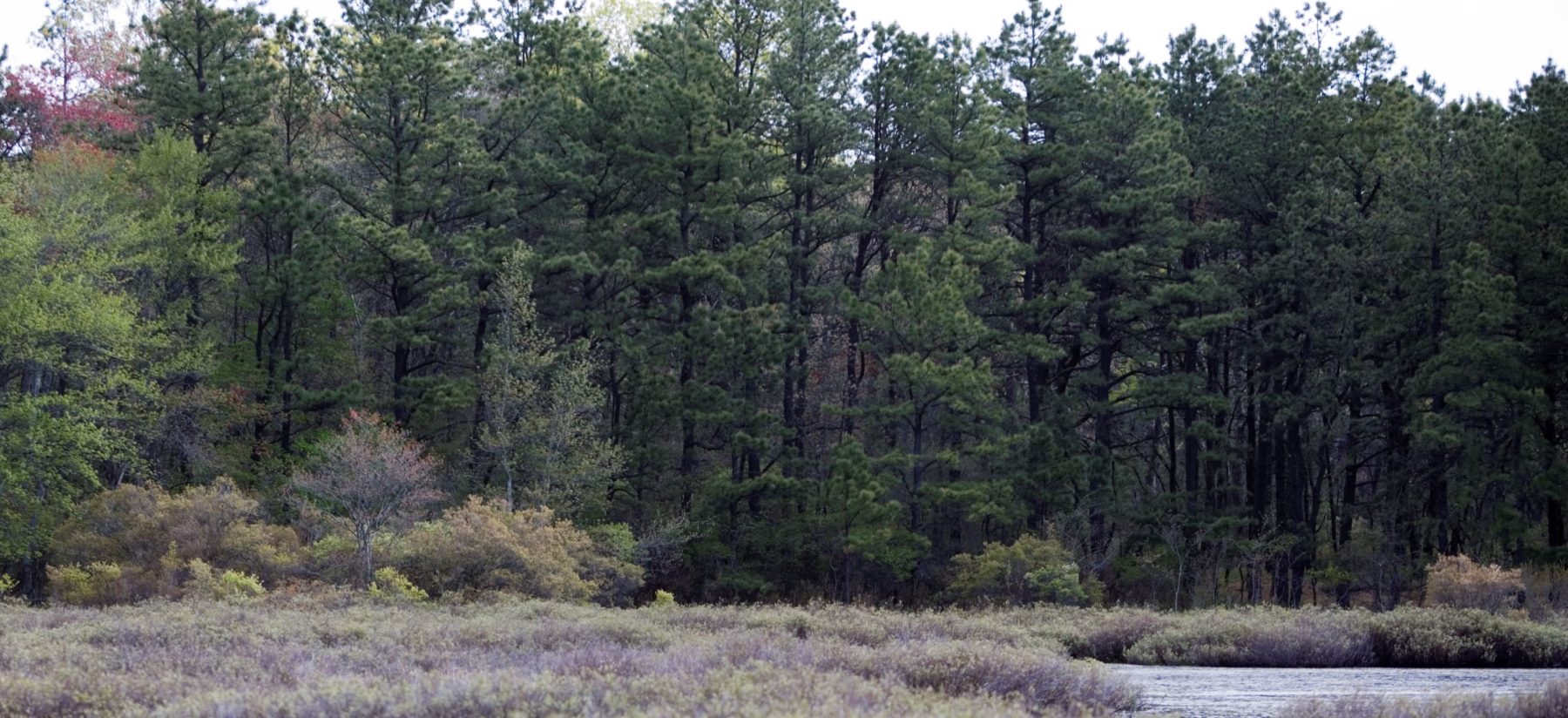
By: Ryan Wolf
- Walt Whitman Eulogizes Abraham Lincoln:
 Walt Whitman was a true Long Islander. Often spending his days traveling through the Pine Barrens, Whitman often used the inspiration that rural life granted him in his poems. In April 1865, the combined shock and grief of the death of Abraham Lincoln and the destruction caused by the Civil War influenced Whitman to recall happier times with nature and write, what would become, the nation’s greatest eulogy. The influence of the Pine Barrens on Whitman’s poem is most prominently evident in his references to the “Hermit Thrush”, a solitary bird often found in the Pine Barrens that is known to utter the most beautiful song of nature. Comparing the Hermit Thrush to himself, Whitman recognized that, like the bird, he wished to remain in nature in solitude as it offered him a sense of renewal. He believed that the beautiful song of the Hermit Thrush, so often heard by residents of the Pine Barrens, was similar to those eulogies and tributes offered by a grieving nation. The poem, while a highly acclaimed eulogy, also exhibits the sense of healing that nature and the Pine Barrens can provide.
Walt Whitman was a true Long Islander. Often spending his days traveling through the Pine Barrens, Whitman often used the inspiration that rural life granted him in his poems. In April 1865, the combined shock and grief of the death of Abraham Lincoln and the destruction caused by the Civil War influenced Whitman to recall happier times with nature and write, what would become, the nation’s greatest eulogy. The influence of the Pine Barrens on Whitman’s poem is most prominently evident in his references to the “Hermit Thrush”, a solitary bird often found in the Pine Barrens that is known to utter the most beautiful song of nature. Comparing the Hermit Thrush to himself, Whitman recognized that, like the bird, he wished to remain in nature in solitude as it offered him a sense of renewal. He believed that the beautiful song of the Hermit Thrush, so often heard by residents of the Pine Barrens, was similar to those eulogies and tributes offered by a grieving nation. The poem, while a highly acclaimed eulogy, also exhibits the sense of healing that nature and the Pine Barrens can provide. - Birthplace of God Bless America:
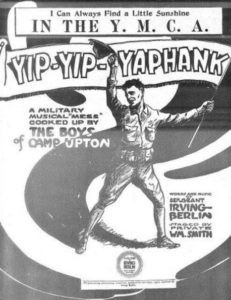 Attend a sporting event and what are you almost guaranteed to hear? “God Bless America”. But while this song is now a national staple, it has humble beginnings in the Pine Barrens. IN 1917, the US Army erected Camp Upton in the Yaphank Pine Barrens for the training of troops scheduled for deployment in World War One. One of these soldiers who temporarily called Camp Upton “home” was composer, Irving Berlin. Combining his experience at the camp with his craft, Berlin wrote the play “Yip, Yip Yaphank.” As part of this process, Berlin drafted his first attempt at the song that would become “God Bless America.” While it became popularized in the 1940s, with the film adaption of “Yip, Yip Yaphank” known as “This is the Army”, the song that is now arguably the “stand-in” national anthem was born in the PIne Barrens of Long Island.
Attend a sporting event and what are you almost guaranteed to hear? “God Bless America”. But while this song is now a national staple, it has humble beginnings in the Pine Barrens. IN 1917, the US Army erected Camp Upton in the Yaphank Pine Barrens for the training of troops scheduled for deployment in World War One. One of these soldiers who temporarily called Camp Upton “home” was composer, Irving Berlin. Combining his experience at the camp with his craft, Berlin wrote the play “Yip, Yip Yaphank.” As part of this process, Berlin drafted his first attempt at the song that would become “God Bless America.” While it became popularized in the 1940s, with the film adaption of “Yip, Yip Yaphank” known as “This is the Army”, the song that is now arguably the “stand-in” national anthem was born in the PIne Barrens of Long Island. - First Conception of the Internet:
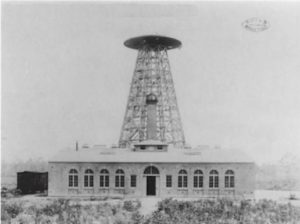 As the inspiration for Frank Baum’s Wizard of Oz, Nikola Tesla was truly a master of innovation. Perhaps Tesla’s greatest scientific pursuit in life, however, was his attempt to wirelessly transmit electric energy across the globe. To accomplish this, Tesla redirected his focus to Shoreham, NY. There, Tesla built Wardenclyffe, a 186 foot wood-framed tower and laboratory. The goal of Wardenclyffe was to transmit wireless messages and even scanned images (fax) across the Atlantic and to England. If these experiments were successful, Tesla would have proceeded with the creation of his “Word Wireless System” – an early predecessor to the internet. Unfortunately, funding for the tower dried up as Tesla could not attract further investment in his idea. By 1906, Tesla had abandoned the tower and the idea.
As the inspiration for Frank Baum’s Wizard of Oz, Nikola Tesla was truly a master of innovation. Perhaps Tesla’s greatest scientific pursuit in life, however, was his attempt to wirelessly transmit electric energy across the globe. To accomplish this, Tesla redirected his focus to Shoreham, NY. There, Tesla built Wardenclyffe, a 186 foot wood-framed tower and laboratory. The goal of Wardenclyffe was to transmit wireless messages and even scanned images (fax) across the Atlantic and to England. If these experiments were successful, Tesla would have proceeded with the creation of his “Word Wireless System” – an early predecessor to the internet. Unfortunately, funding for the tower dried up as Tesla could not attract further investment in his idea. By 1906, Tesla had abandoned the tower and the idea.
- Daniel Webster and the Carmans River:
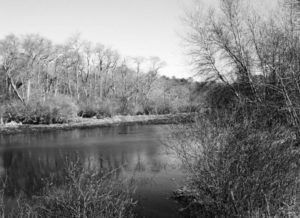 There is no shortage of legends about the Pine Barrens’ Carmans River. But, perhaps the most prevalent is that of American Statesman Daniel Webster’s impressive 14lb salmon-trout. Legend has it that Webster was attending Sunday Church service, when he received word of the unusually large trout nearby. The entire church congregation allegedly followed Webster out of the church and witnessed him catch this historic fish. Regardless if this story is fact or fiction, it is true that Webster loved to fish on the Carmans River and, even, rented land along the river to invite his fishing friends. Among these friends who frequented the Long Island Pine Barrens was President Martin Van Buren.
There is no shortage of legends about the Pine Barrens’ Carmans River. But, perhaps the most prevalent is that of American Statesman Daniel Webster’s impressive 14lb salmon-trout. Legend has it that Webster was attending Sunday Church service, when he received word of the unusually large trout nearby. The entire church congregation allegedly followed Webster out of the church and witnessed him catch this historic fish. Regardless if this story is fact or fiction, it is true that Webster loved to fish on the Carmans River and, even, rented land along the river to invite his fishing friends. Among these friends who frequented the Long Island Pine Barrens was President Martin Van Buren.
- Transmission of the Cold War “Red Phone:
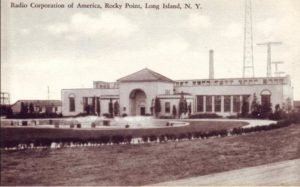 The “red phone” between the United States and the Soviet Union is an indelible image of the Cold War. But, without the Long Island Pine Barrens, this “red phone” line would have been as effective as a string and two tin cans. The current Rocky Point and David Sarnoff preserves were once home to a global communications and transmission center for Radio Corporation of America. The site of the world’s largest transmitting station, the station was used to channel the “hot line” connection between the White House and Kremlin during the height of the Cold War. The site was also famously used to transmit the “Little America” broadcasts during Richard Byrd’s expedition to Antarctica.
The “red phone” between the United States and the Soviet Union is an indelible image of the Cold War. But, without the Long Island Pine Barrens, this “red phone” line would have been as effective as a string and two tin cans. The current Rocky Point and David Sarnoff preserves were once home to a global communications and transmission center for Radio Corporation of America. The site of the world’s largest transmitting station, the station was used to channel the “hot line” connection between the White House and Kremlin during the height of the Cold War. The site was also famously used to transmit the “Little America” broadcasts during Richard Byrd’s expedition to Antarctica.
Posted on February 13, 2019 by Long Island Pine Barrens Society
Photographing the Long Island Pine Barrens
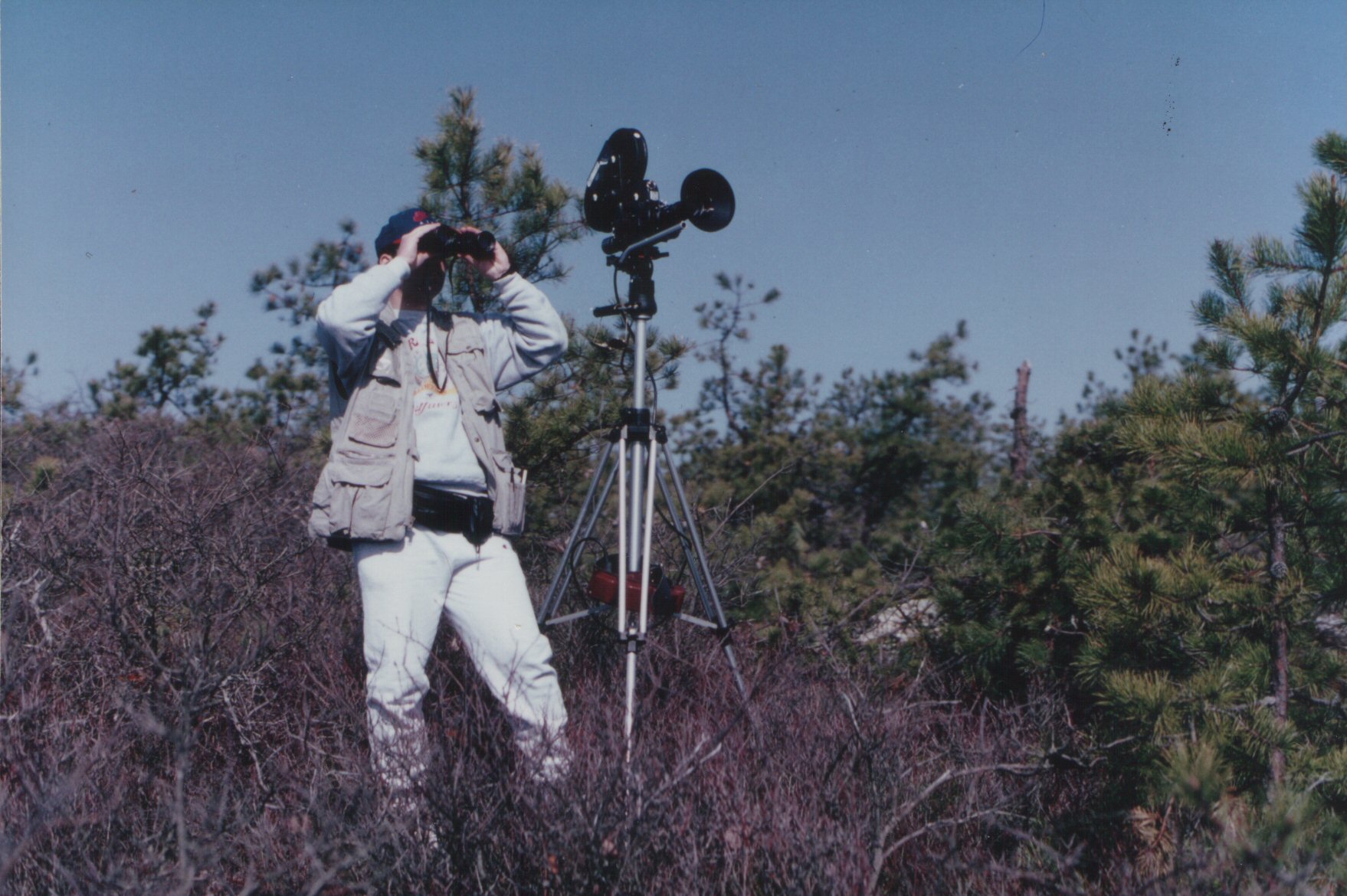
By: Ryan Wolf
Like so many of the world’s natural wonders, the Long Island Pine Barrens is a major source of inspiration for professional and amateur photographers alike. As the Pine Barrens is a rare and diverse ecosystem, however, the methods to best capture the Pine Barrens by lens are equally as diverse and unique. The next time you explore the Pine Barrens with camera in hand; take these helpful tips and accompanying examples into consideration to fully realize the photogenic nature of the Long Island Pine Barrens:
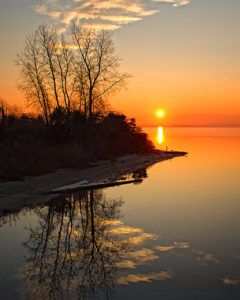
Great South Bay by KCelella
1. Take Photos During the “Golden Hour” or “Blue Hour”
Taking photos during the height of the day can cause glare and overblown final products. For the best results, try to capture nature in the few minutes after sunrise or before sunset (Golden Hour) or when the sun is directly below the horizon (Blue Hour). This method will not only improve your photos by reducing exposure problems, but by creating a stunning hue in the background of your photo. Both the “gold” and “blue” hues that these times create help produce longer shadows of the landscape’s features and enhance the landscape. To find out the “Golden” and “Blue” hours for Long Island at specific points in the year, try one of the various calculators available online. For “Golden Hour” photographers, please visit: http://www.golden-hour.com/. “Blue Hour” photographers may try http://www.bluehoursite.com/.
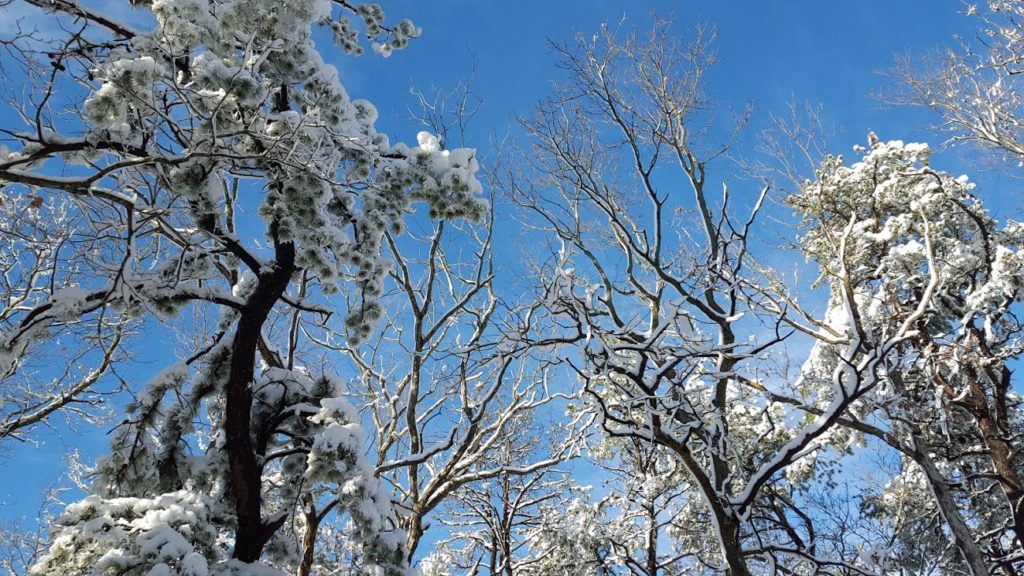
Pine Barrens in the Snow by Katie Muether
2. Take Advantage of the Sky as Background
A nature photographer has one benefit that no other photographer has at his/her disposal: an ever present background. The sky is a perfect candidate for those looking for a good background to their photograph. Not only do sky photographs look dramatic, but a clear sky allows one to emphasize a photographer’s intended subject matter. To produce the best sky photographs, always keep the “exposure triangle” – shutter speed, ISO and aperture – in mind. Depending on the type of photograph you wish to shoot, consider the location of the sun in the sky. If you want a well exposed photograph, consider shooting with the sun directly behind you.
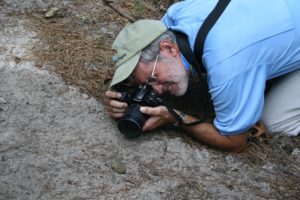
Ray Corwin Taking a Picture
3. Ground Level is your Friend
Capture nature from a different perspective by kneeling down and taking photographs from ground level. These low angles will allow your photographs to reach “new heights” in terms of variety and allure. For those wishing to invest in low angle photography, the best option is the use of a “ground pod”, which allows one to place their camera directly on the ground while providing stability to the shot. For ease of use, it is also recommended that one purchases an angled viewfinder that allows photographers to be perfectly aligned at the lowest angles.
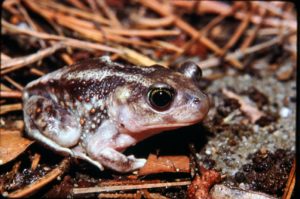
4. Look for the Smallest Things
A creature’s a creature no matter how small. Related to finding low angles – nature photographers mustn’t forget about the smallest of creatures. These creatures may often times be unknown to the general public and, therefore, subject to a great deal of interest. Nature photography, after all, is not only an art form, but a way to document our environment for the present public and for posterity .
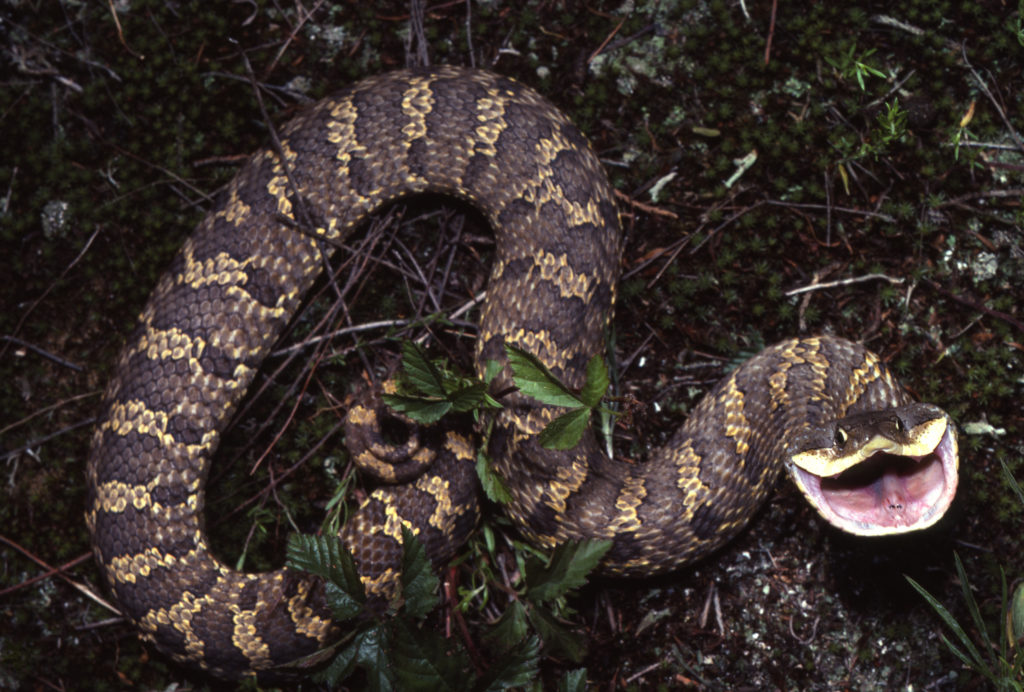
Eastern Hognose Snake by Bob McGrath
5. Don’t Just Take Pictures for the Sake of It
Rule number one in nature photography: be patient. Nature will not adjust for your photograph, so you must adjust to it. You never know when you are going to get a great picture. Photographers who go out into nature for the sole reason of taking photographs will not fully enjoy their time. Your first and foremost priority in nature photography must be to experience and enjoy nature. If you find some great photo opportunities along the way, then you should celebrate. In the end, there is no right or wrong way of taking nature photographs as long as the photos capture the essence of the subject landscape or ecosystem. Just have a great time, and don’t forget to wear appropriate hiking boots and weather-appropriate clothing!
Posted on January 18, 2019 by Long Island Pine Barrens Society
New Year’s Resolution 2019: Hike
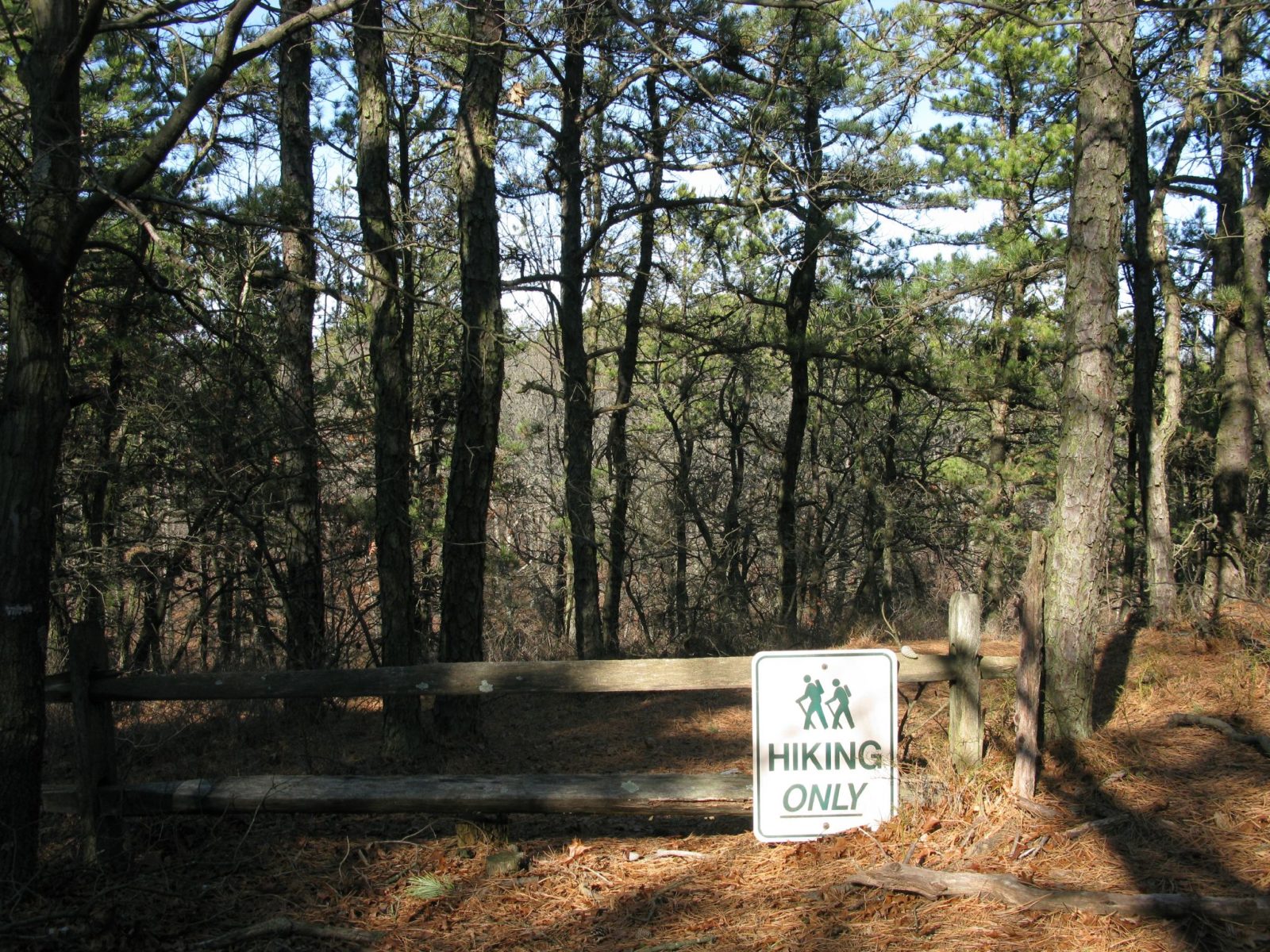
New Year’s resolutions are an annual tradition and, yet, often difficult to maintain. In 2019, kick off a new resolution right away with the nationwide trend known as “First Day Hikes”. Dedicate yourself to hiking more in the New Year by starting on Day #1. The “First Day Hike” movement was created by the America’s State Parks organization in order to raise awareness of the benefits of being outside, even in the winter! On January 1st, 2018, more than 55,000 people participated in this New Year’s hike and we hope you are one of these people this year! Hiking is not only fun, but has major health benefits. These include lowering the risk of heart disease, strengthening one’s core, improving blood pressure and weight loss. Perhaps, most importantly, however, hiking offers the chance for friendship! On Long Island, a number of guided group hikes are scheduled for January 1st, 2019 for those in Nassau and Suffolk Counties.
Scheduled First Day Hikes
Ridge Conservation Area, Suffolk County: Starting at 1 pm, the 2.25 mile hike around the Ridge Conservation Area will give hikers a great collective experience of Eastern Suffolk County’s environment. The hike features 14 interpretive posts describing forest, grassland and pond habitats. The interpretive trail hike will provide scenic viewing locations and be completely guided. For more information, reach out to the hike’s guide, David Pomeranz, at david.pomeranz@dec.ny.gov. The conservation area is located at 484 Randall Rd, Ridge, NY 11961.
Connetquot River State Park Preserve, Suffolk County: Starting at 1:30pm at the park’s Main House, this hike will offer great scenic views along a 2.5 mile trail. Guided by the State Parks Department, participants will a knowledgeable and relaxing walk near the beautiful Connetquot River. Registration can be made at 631-581-1072. The park is located at 3525 Sunrise Hwy, Oakdale, NY 11769.
Bethpage State Park, Nassau County: Starting at 10 am, Nassau County residents can welcome the New Year at Bethpage State Park. A 5 mile hike will offer the opportunity for hikers to see signs of rabbits, hawks, fox and owls along the trail. The group meet-up will be at the park’s Picnic area parking lot by rest rooms. For more information about this hike, feel free to contact 516-249-3560. The park is located at 99 Quaker Meeting House Rd, Farmingdale, NY 11735.
Hiking on your Own?
For those wishing to hike on their own for the day or throughout 2019, the Long Island Pine Barrens is a great site for hiking. With more than two dozen preserves within its jurisdiction alone, the Long Island Pine Barrens has a plethora of hiking trails. And with no bears or poisonous snakes on Long Island, the Long Island Pine Barrens is a hiking haven! However, with some many hiking options, we, at the Pine Barrens Society, thought you might need some tips for your First Day Hike on January 1st.
Hiking Locations
Some of the best hiking locations in the State of New York are right here in the Long Island Pine Barrens:
- The Paumanok Path:
No hiking list would be complete without mentioning the 125 mile Paumanok Path. While “First Day Hike” strives to include everyone – expert hiker and first time hiker alike – in the joys of hiking, the Paumanok Path should only be completed by the most prepared of hikers. Spanning from Rocky Point to Montauk, the Paumanok Path is nicknamed “Long Island’s Appalachian Trail”. In fact, only one person has ever been able to complete the entirety of the Paumanok Path…and it took six days! However, those not willing to invest six days into the hike can still enjoy the Paumanok Path as many of the Pine Barrens’ trails follow the Paumanok Path - Rocky Point Preserve:
For those interested in a soothing day-long hike, the Rocky Point Preserve is a perfect candidate. At eleven miles, the Rocky Point Preserve offers a scenic view of an essential part of the Pine Barrens. At 5,000 acres, the Rocky Point Preserve is a large home for an abundant supply of wildlife so don’t be surprised if you have spectators while hiking. The other added benefit – your dog is allowed to join you on this hike.
Directions – The parking area for the preserve and the western terminus of the Paumanok Path lies on the south side of NY 25A in Rocky Point, 0.6 mile east of the junction with NY 25A and North Country/ County Road 20 and 0.4 mile west of Rocky Point– Yaphank Road/County Route 21. - Hubbard County Park:
Hubbard County Park is the perfect place for learning about human and geological history while hiking. At 2.6 miles, the Hubbard County Park hiking trail provides a short trip through the Pine Barrens, a trip that is decorated by Flanders Bay, a historic building known as the Black Duck Lodge and a “Ghost Forest”. The Ghost Forest refers to a series of sunken stumps that were once Atlantic White Cedars when sea levels were lower – a perfect photo opportunity. Black Duck Lodge, on the other hand, is a 19th century farmstead that was later converted to a hunting lodge for wealthy financier E.F. Hutton. If you get tired during your hike, don’t forget to relax near the scenic Owl Pond, ringed with sweet gale, leatherleaf, swamp azalea and other wetlands shrubs
Directions – From NY 27 Exit 65, go north about two miles on NY 24 to Red Creek Road. Park alongside RC Road in one of the many pull-off spots and walk the 1/5 of a mile in to the Black Duck Lodge.4. Westhampton Dwarf Pine Plains:
If you are hiking on the first day of the year, why not see a global rarity? The Dwarf Pine Plains is only one of three such areas, the other two being found in the New Jersey Pine Barrens and Ulster County’s Shawangunk Mountains. Characterized by trees of no more than six feet and the poor soil that stunt their growth, Dwarf Pine Plains are an ecological marvel. It is Long Islanders’ good fortune to have this marvel accessible year round to explore. For hikers, the Dwarf Pine Plains offers two trails to try – one trail on the west side of County Route 31 and an interpretive loop on the east side.
Directions – Take Route 27 (Sunrise Highway) to Exit 63. At the southwest corner of the interchange, pull off immediately into an unpaved clearing just beyond the shoulder. Alternately, parking is available across the road at a Suffolk County Water Authority building adjacent to the interpretive loop. For the west-side loop, locate an unmarked trail at the south end of the dirt parking area and heading south parallel to C.R. 31. The path extends a quarter mile to the side yard of a small commercial building. Turn right, and at the rear of the property a wide, straight trail heading northwest lures hikers into the heart of the Dwarf Pines.
With these great examples of hiking on Long Island, we hope you can go out and take full advantage of the Long Island Pine Barrens’ offerings. Exercise, fresh air and relaxation. Start your New Year’s with all three by going hiking on January 1st. Overall, all of us at the Pine Barrens Society wishes you a Happy and safe holiday season, New Year’s and hiking outing!
Posted on December 21, 2018 by Long Island Pine Barrens Society
We Won the War of the Woods, Now on to the War for Our World
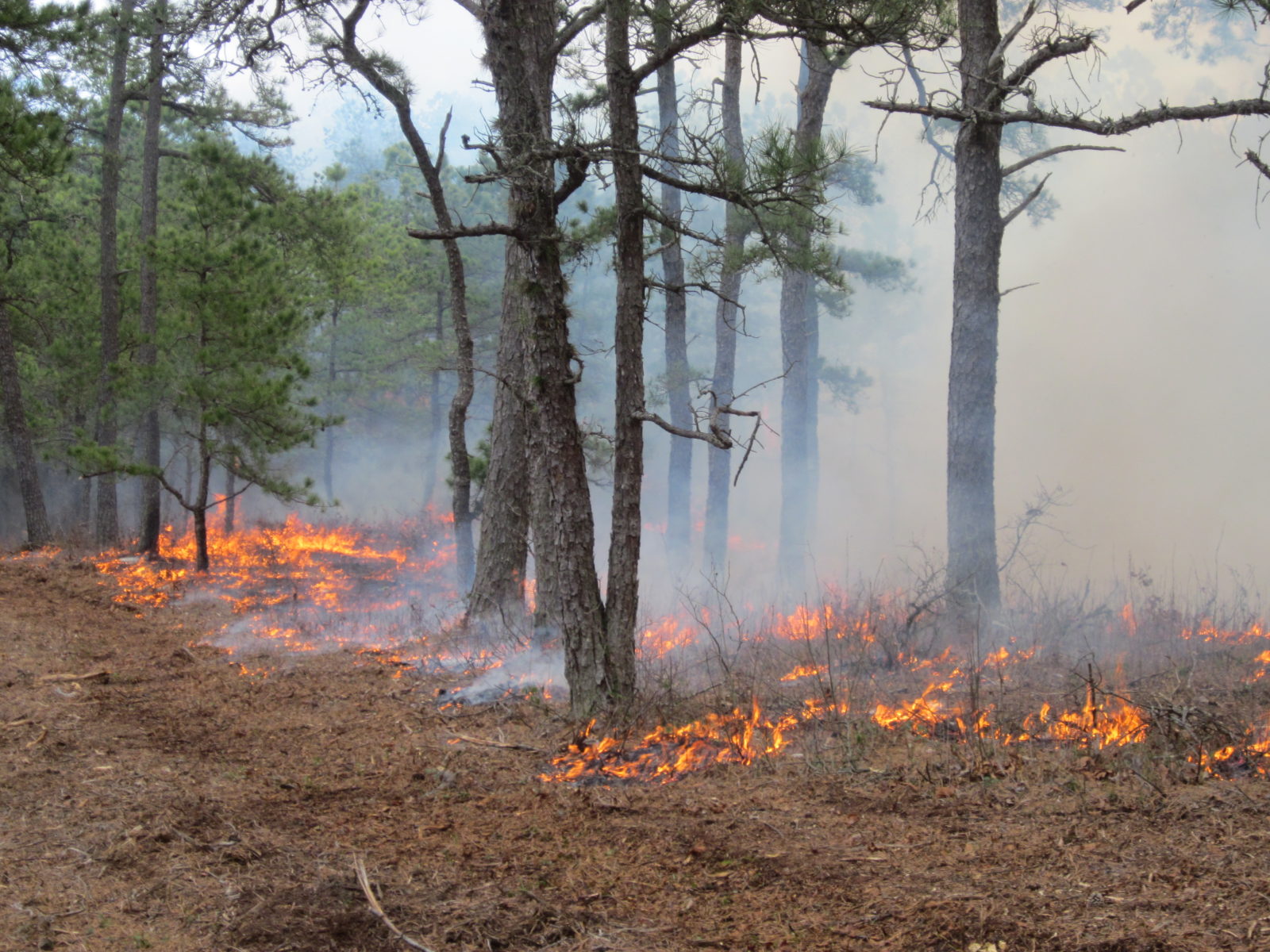
By John Cryan, Pine Barrens Society Co-Founder
We’re about to lose the peace, in two interrelated ways. First, the Pine Barrens is not being fire-managed, but fire-suppressed in most places. Whole vital ecosystems, like the Dwarf Pine Plains, are in great danger of being lost through plant succession – takeover by other species. Second, rapidly accelerating global warming (RAGW) threatens the whole world, and the Pine Barrens as well, with complete destruction. I’ll discuss the local fire issue first.
We need to do a lot of burning fast. If we don’t we will experience another 1995-scale fire, or, more likely in the global warming era, multiple ones when the next big drought hits, as it inevitably will soon. That one was so hot it actually killed many of the Pine Barrens plants and animals outright. These are species adapted to fire. But if we don’t burn, we will lose our entire Pine Barrens biota.
So what happened? The area that burned had not had a fire in over 50 years, way too long a period to go fireless in a fire-climax ecosystem. The average Pine Barrens acre used to burn every ten to twenty-five years. Most of the original fires were fairly light and cool by California chaparral standards, but they burned large acreages, sometimes all the way across the entire Pine Barrens. They renewed the Pine Barrens flora and fauna in their wakes; fresh resprouts often sprang up the same year. And they kept out many other species that would, and have, easily taken over and killed the endemic Pine Barrens species. The irony here is many of the invaders burn hotter than the native Pine Barrens plants.
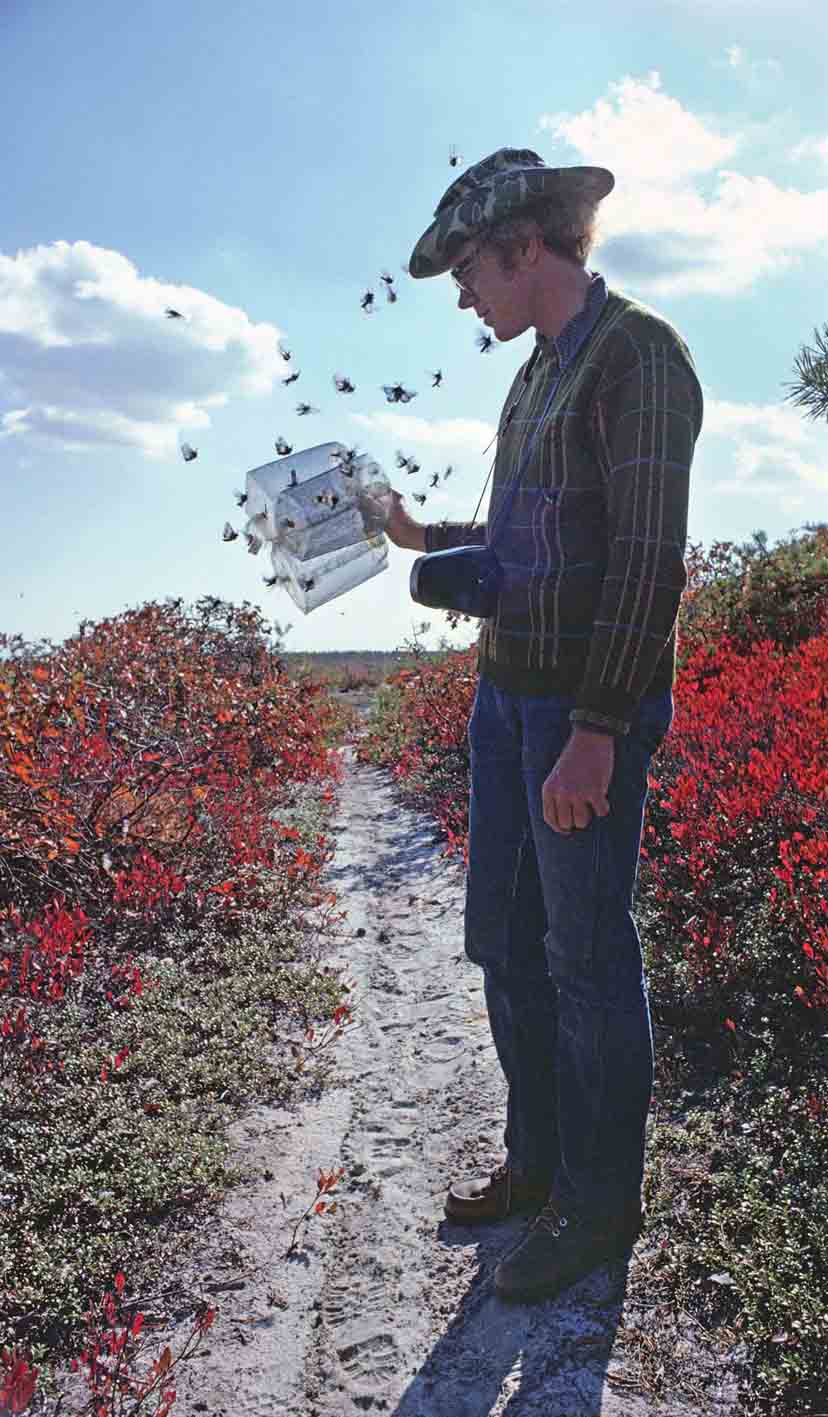
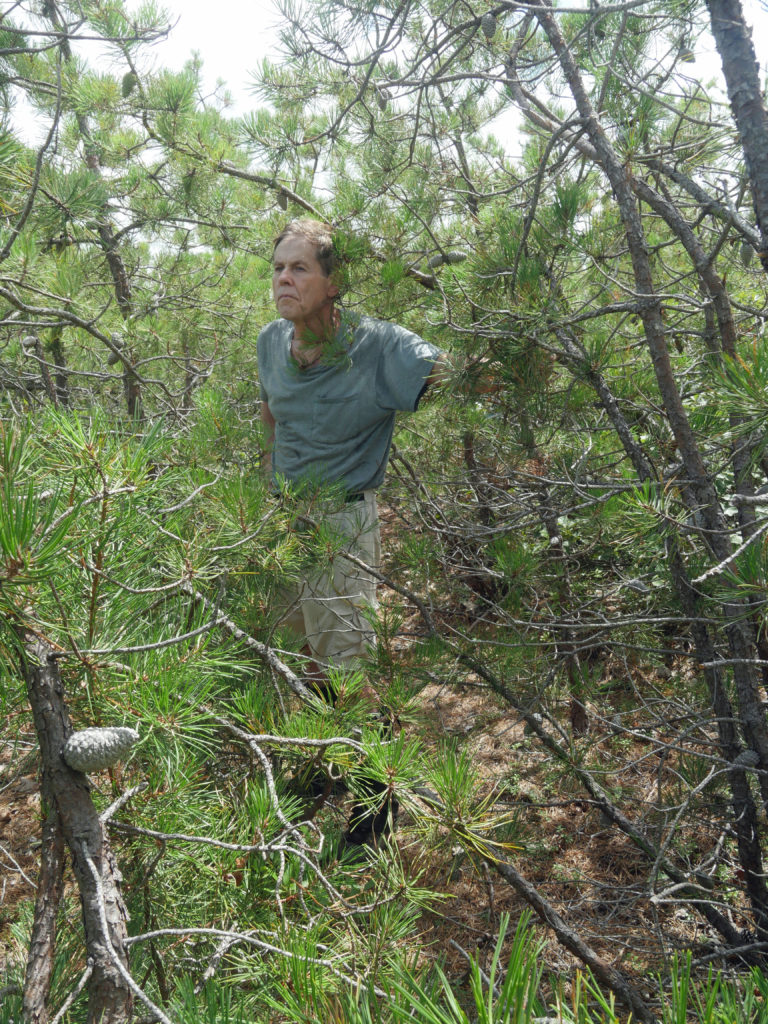
John Cryan in the Pine Barrens by John Burnley, 1980 (Left). John Burnley in the same spot as Cryan in 2018 (Right)
How do we catch up? We need to get smart, learn from others, and forge our own path. Another public education campaign will also be required to gain support. In the Jersey Pine Barrens, up to thousand-acre tracts are burned; that would be hard to duplicate here except in the largest preserves like Sarnoff/RCA. In the Albany Pine Bush, far smaller areas are burned, and that’s combined with intensive mechanical removal of invaders like aspen and locust. In the Centre County Barrens just west of State College, PA, one of the longest-running management programs uses multiple techniques for cutting and burning, including special management of reserve edges bordering settled areas.
All the active programs first started off by establishing excellent relationships with the communities involved, and especially their fire departments and other agencies involved with fire and disaster response and recovery. The relationships actually benefited the communities and departments by bringing in additional financing, resources, and communications, as well as know-how transferable to many other situations. Some of this groundwork has already been done on Long Island.
The next thing is to do simulations and small controlled burns, while exploring Long Island-centric solutions. We are essentially a spread out suburban city surrounding a central preserve district. There are many areas, not just edges, that will require special techniques, which we will have to pioneer. One is mechanical cutting and harvest of various species at various heights, conversion of that vegetation to the oxidized equivalent of fire ash through a modern pyrolysis digester, then re-spreading those nutrients back onto the harvested areas to support regrowth. Another is the use of frequent, light, skim burns to remove pesky invading vegetation where Pine Barrens meets civilization. Finally, we should look to undevelop and connect preserves separated by tongues of development at high risk in wildfires.
But mostly what needs to be done for the next ten years are large restoration burns, to bring the Pine Barrens back to something resembling its original vegetation structure and composition. And here’s where our contribution to the worldwide struggle to stop and reverse global warming comes in.
There is an enormous inherent conflict between halting carbon emissions and keeping a fire climax ecosystem going by correctly burning it! But we can leverage this for a dual solution to both Pine Barrens survival and our contribution to global warming reversal. Call it Pine Barrens offsets.
If we want to pull our weight in the climate war, we will have to come from behind. LI is a wealthy region and can afford to do this. We should estimate what the total CO2 production will be from ramping up our fire management efforts to, say, an average of 5,000 burned acres per year, and seek public support for offsets. These could be in the form of conversions to non-fossil energy in transportation, residential, or business activities. Pine Barrens Credits would be issued to participants. Though they’d have only moral value for now, that would ultimately build into infrastructure and habits. The momentum and experience generated would enable our island’s people to get out in front of the coming push to transform our energy and transportation sectors, including aviation and maritime, where we have deep history. We could become the East Coast cradle for the new business models required to conquer global warming, and thereby secure our future once more.
Failure to stop and reverse rapidly accelerating global warming will have dire consequences for us. If it progresses to runaway global warming we can expect most of the island to disappear in a few hundred years. Before that, almost all the current biota will first be scrambled by newcomers, then extirpated. The lucky species will escape north. Before it ultimately drowns, our Pine Barrens will end as an impoverished echo of long-gone Florida, with hard pines, turkey oaks, and sawtooth palmettos instead of Pitch Pine, Scrub Oak and blueberries. A sad fate, and one we must avoid.
Posted on November 16, 2018 by Long Island Pine Barrens Society

